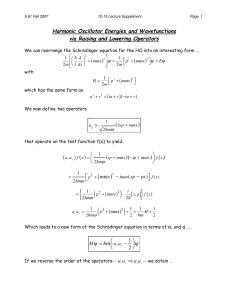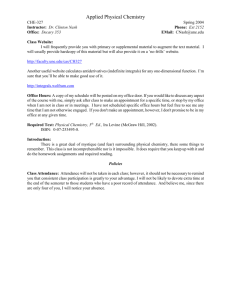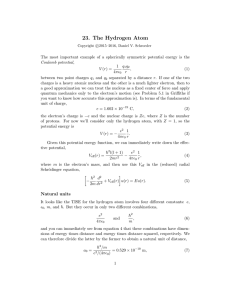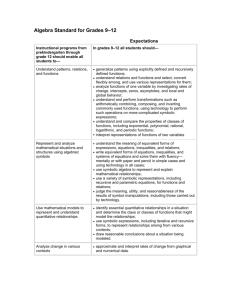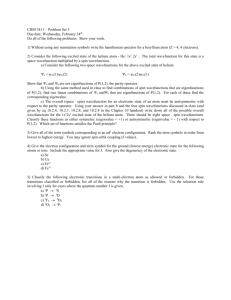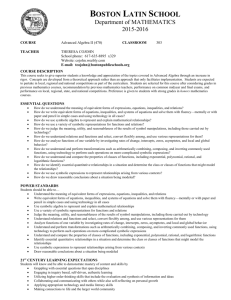Computer Assignment 1
advertisement
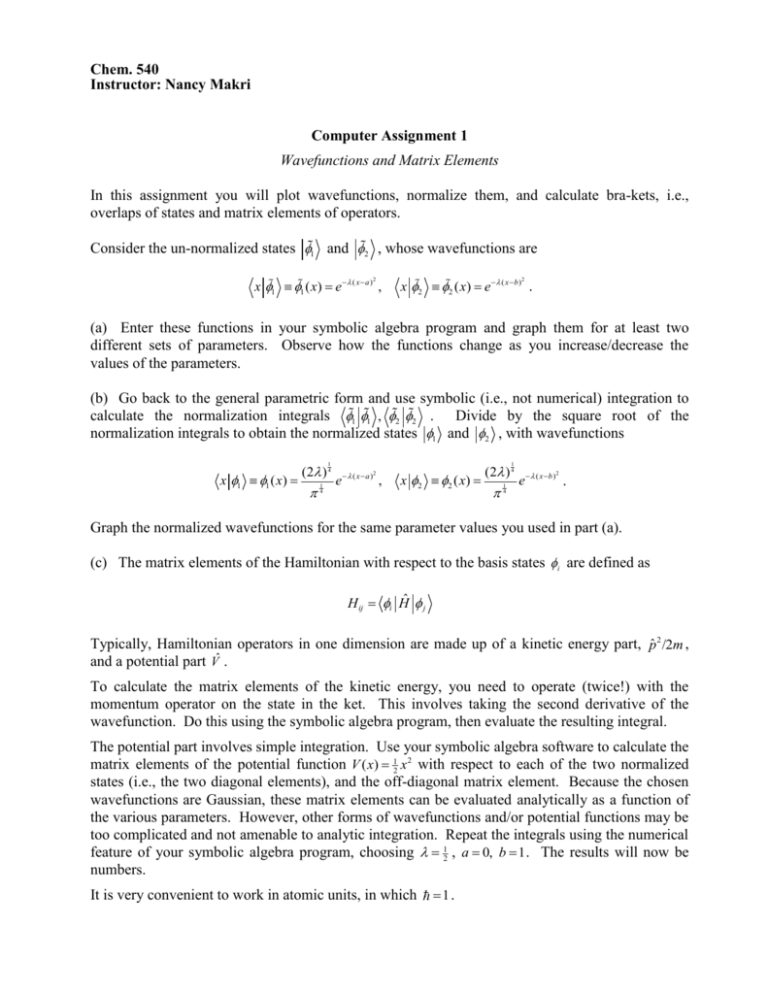
Chem. 540 Instructor: Nancy Makri Computer Assignment 1 Wavefunctions and Matrix Elements In this assignment you will plot wavefunctions, normalize them, and calculate bra-kets, i.e., overlaps of states and matrix elements of operators. Consider the un-normalized states 1 and 2 , whose wavefunctions are x 1 1 ( x) e ( x a ) , 2 x 2 2 ( x) e ( x b ) . 2 (a) Enter these functions in your symbolic algebra program and graph them for at least two different sets of parameters. Observe how the functions change as you increase/decrease the values of the parameters. (b) Go back to the general parametric form and use symbolic (i.e., not numerical) integration to calculate the normalization integrals 1 1 , 2 2 . Divide by the square root of the normalization integrals to obtain the normalized states 1 and 2 , with wavefunctions (2 ) 4 1 x 1 1 ( x) 1 4 (2 ) 4 1 e ( x a )2 , x 2 2 ( x) 1 4 e ( x b ) . 2 Graph the normalized wavefunctions for the same parameter values you used in part (a). (c) The matrix elements of the Hamiltonian with respect to the basis states i are defined as H ij i Hˆ j Typically, Hamiltonian operators in one dimension are made up of a kinetic energy part, pˆ 2 /2m , and a potential part Vˆ . To calculate the matrix elements of the kinetic energy, you need to operate (twice!) with the momentum operator on the state in the ket. This involves taking the second derivative of the wavefunction. Do this using the symbolic algebra program, then evaluate the resulting integral. The potential part involves simple integration. Use your symbolic algebra software to calculate the matrix elements of the potential function V ( x) 12 x 2 with respect to each of the two normalized states (i.e., the two diagonal elements), and the off-diagonal matrix element. Because the chosen wavefunctions are Gaussian, these matrix elements can be evaluated analytically as a function of the various parameters. However, other forms of wavefunctions and/or potential functions may be too complicated and not amenable to analytic integration. Repeat the integrals using the numerical feature of your symbolic algebra program, choosing 12 , a 0, b 1 . The results will now be numbers. It is very convenient to work in atomic units, in which 1.
